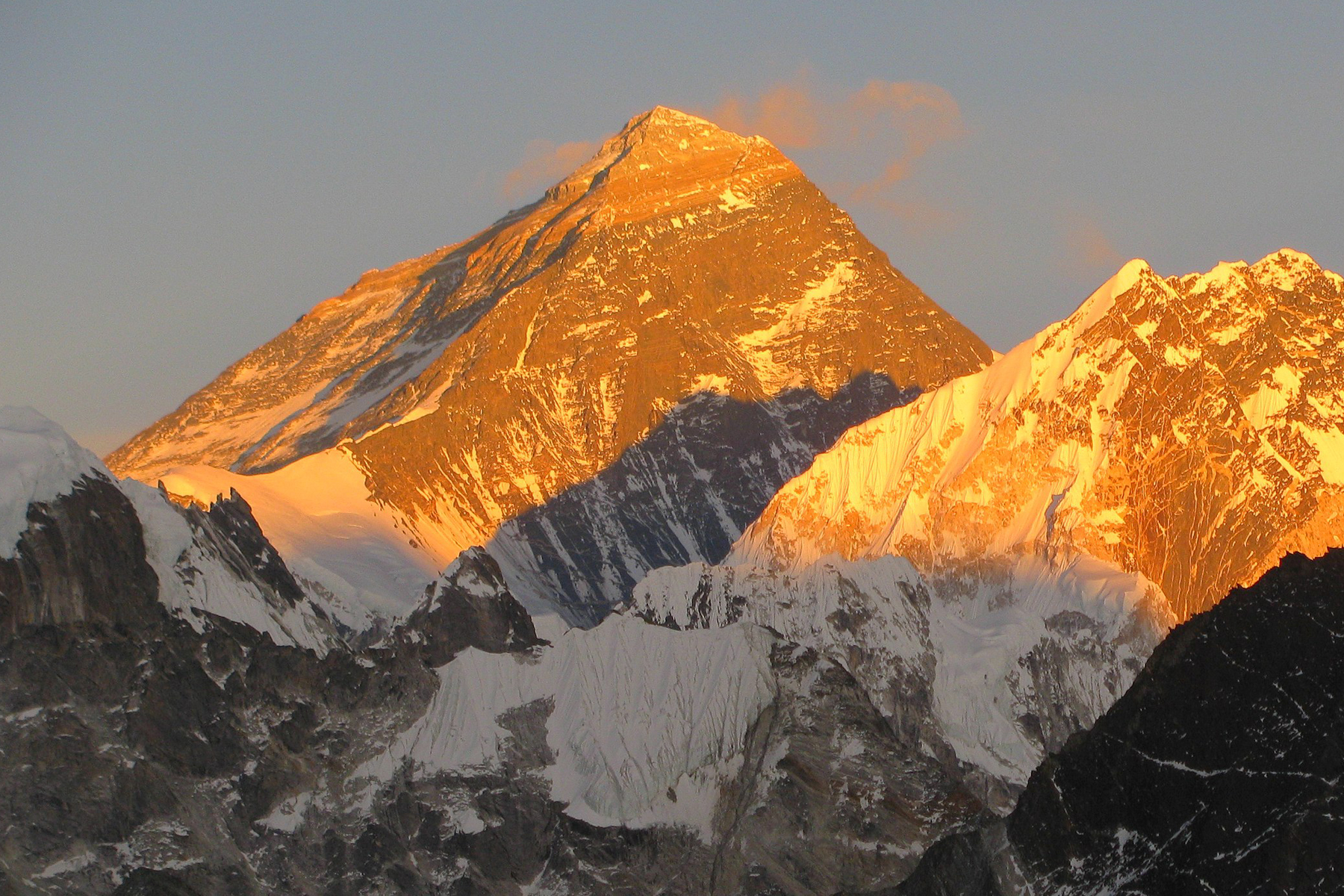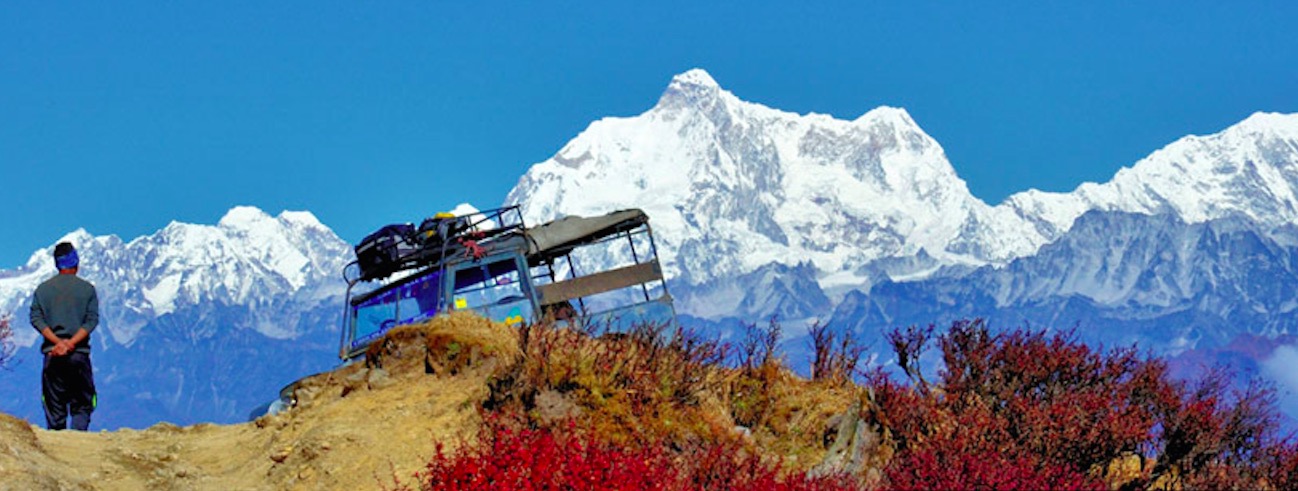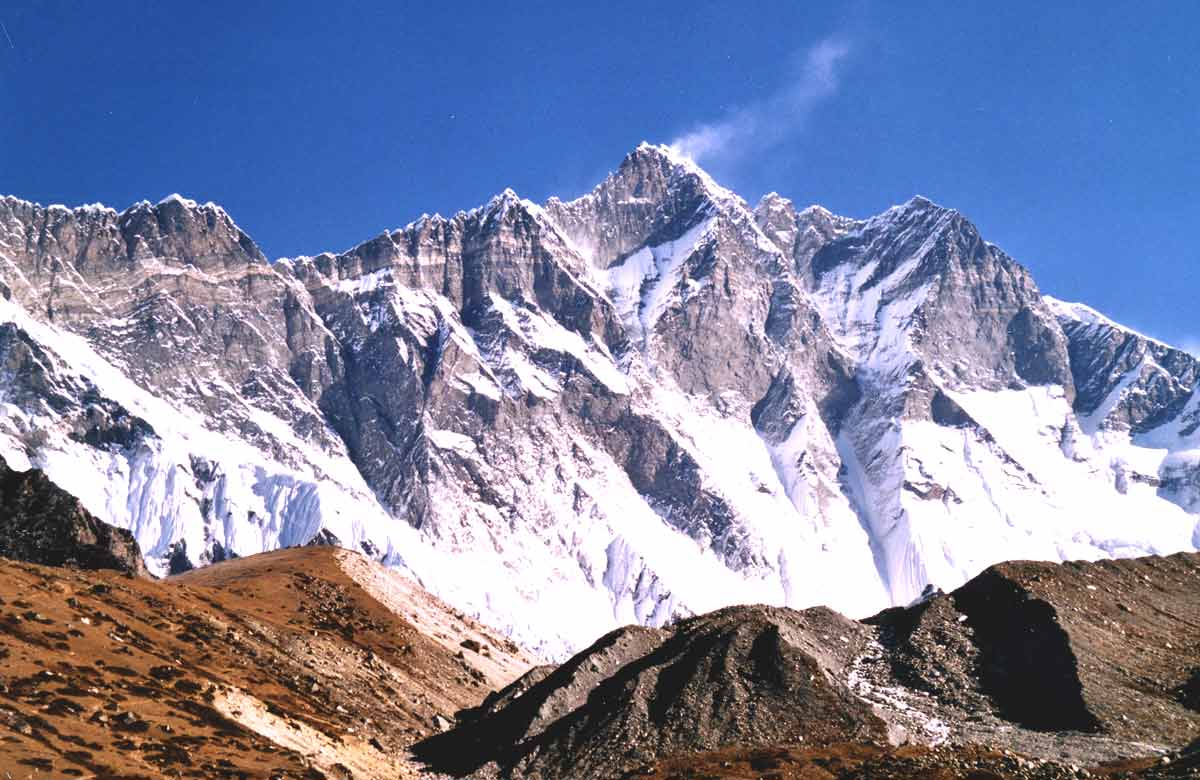Lhotse (8,516 m) is the fourth highest mountain in the world and was first climbed by Ernst Reiss and Fritz Luchsinger of the Swiss Mount Everest/Lhotse Expedition team on May 18, 1956. However, the earlier attempt was made in 1955 by International Himalayan Expedition. The team included two Austrians, two swiss, and three Americans. A total of 200 porters and numerous climbing Sherpas also became part of this project. Later on May 12, 1970, two Austrians (Sepp Mayerl and Rolf Walter) reached the top of Lhotse Shar, and on May 23, 2001, the middle summit of Lhotse was summited by Eugeny Vinogradsky, Sergei Timofeev, Alexei Bolotov and Petr Kuznetsov of a Russian Expedition team.
Makalu

Makalu (8,481 m) is the fifth highest mountain in the world. This Himalayan mountain was first summited on May 15, 1955, by Lionel Terray and Jean Couzy of a French team, led by Jean Franco. Jean Franco, Guido Magnone, and Gyalzen Norbu Sherpa reached the top the next day, followed by four other team members, on May 17. As Makalu is one of the most difficult mountains to scale, reaching its summit was a major achievement. An earlier attempt was made by the California Himalayan Expedition team, led by Riley Keegan in the spring of 1954. At the same time, the team of Sir Edmund Hillary was also moving towards the summit, but both parties did not reach the summit because of bad weather and injuries.
Cho Oyu – The Easiest 8,000’er
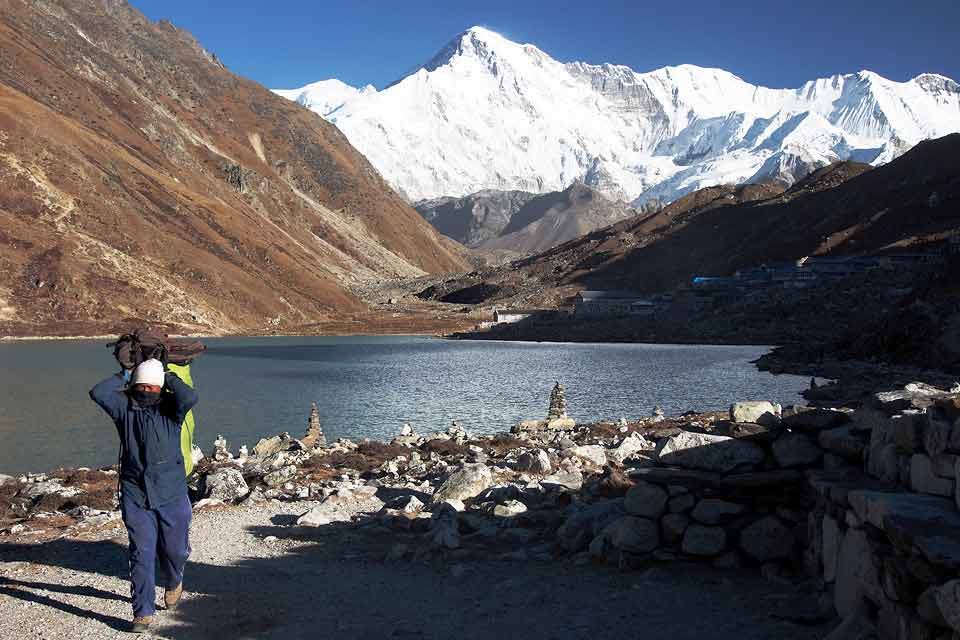
The sixth highest mountain in the world, Cho Oyu (8,201 m) was first attempted in 1952 by the expedition team organized and financed by the Joint Himalayan Committee. Climbing Cho Oyu was part of the teams’ preparation for scaling Everest. The team was led by Eric Shipton and joined by the very famous Edmund Hillary, Tom Bourdillon, and George Lowe. However, the unseen obstacle of Chinese
troops across the border resulted in withdrawing from the mountain rather than continuing towards the summit. Later in 1954, October 19, the members of the Austrian Expedition team – Herbert Tichy, Joseph Jöchler, and Sherpa Pasang Dawa Lama reached the summit of Cho Oyu via the northwest ridge. Mountain Cho Oyu is considered one of the easiest eight-thousanders with the lowest death rate, ideal for amateur climbers.
Dhaulagiri – The White Mountain
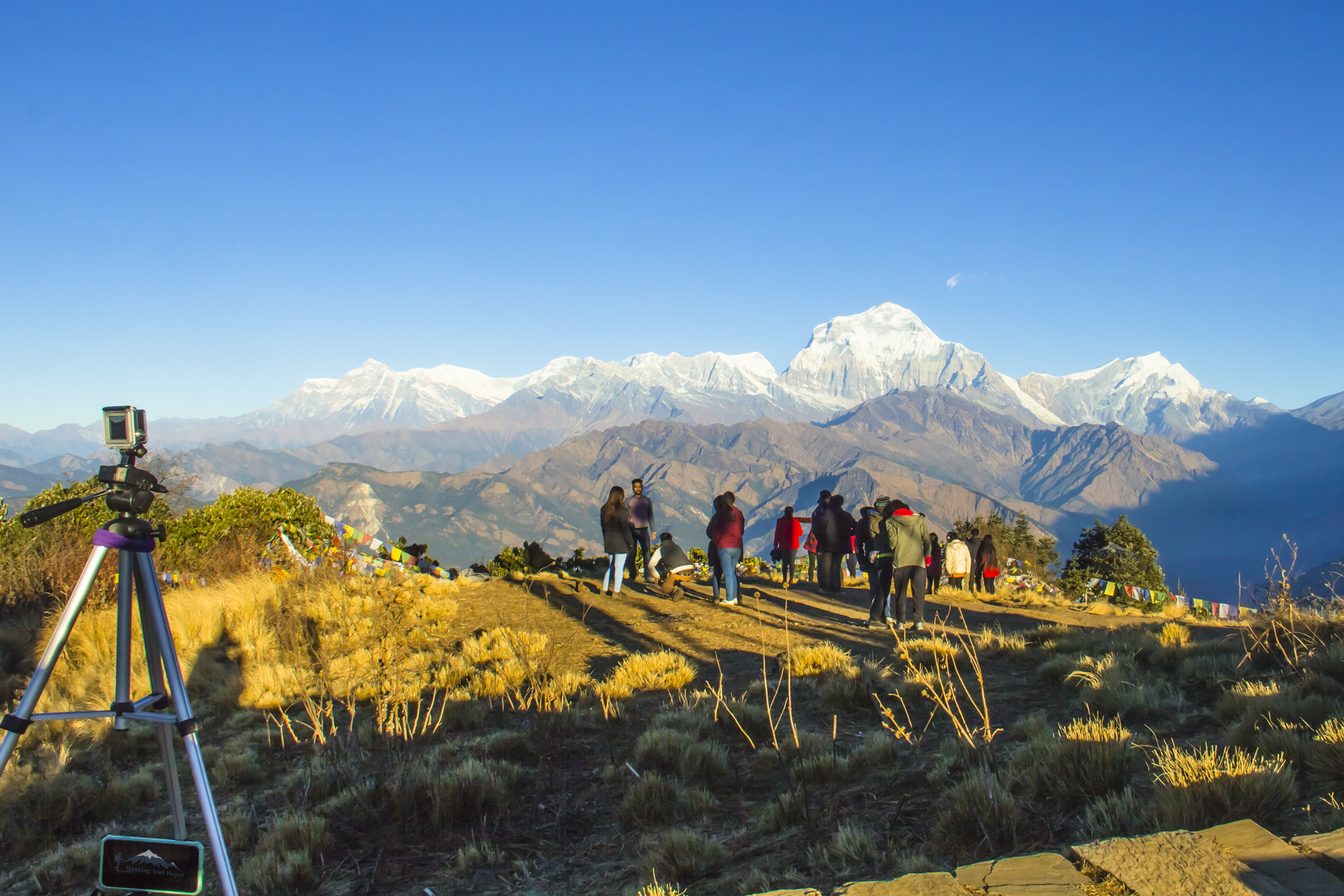
Dhaulagiri (8,167 m) is the seventh highest mountain in the world. This mountain has five summits, with only Dhaulagiri I above 8,000 meters. Rest of the four summits – Dhaulagiri II (7,751), Dhaulagiri III (7,715 m), Dhaulagiri IV (7,661 m), Dhaulagiri V (7,618 m) are under 7,000 meters. Dhaulagiri was first summited in 1960, May 13, by the Swiss Austrian Expedition team led by Max Eiselin. The team was joined by six members – Kurt Diemberger, Peter Diener, Ernst Forrer, Albin Schelbert, Nyima Dorje Sherpa, and Nawang Dorje Sherpa, excluding the team leader.
Manaslu
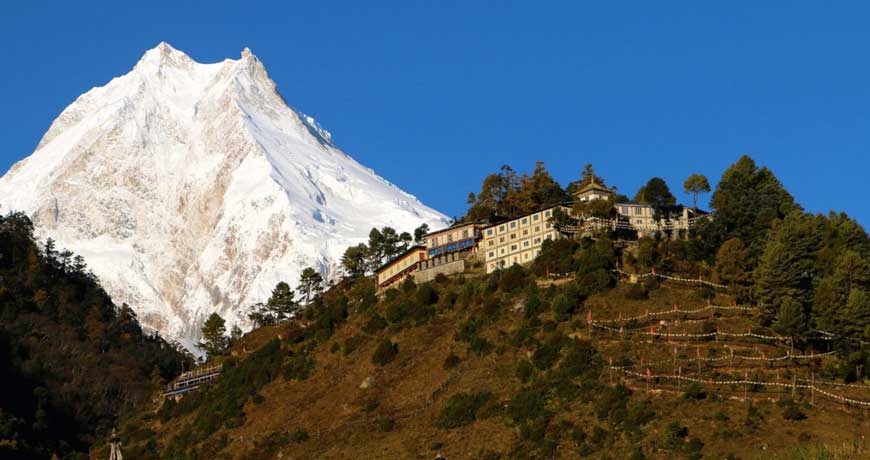
The first expedition towards the top of the eighth highest mountain in the world, Mt. Manaslu (8,163 m), was held by Europeans. They trekked to Larkya La Pass and saw the direct route to the top of Manaslu, but did not attempt it. After that, many expedition teams tried to reach the top of Mount Manaslu, and in 1956, a Japanese Expedition team reached the top of the mountain. No one then climbed this mountain until 1971. Later, in 1977, the first American, Charlie Mace stood on the summit of Manaslu.
Annapurna – 1st 8,000m Success
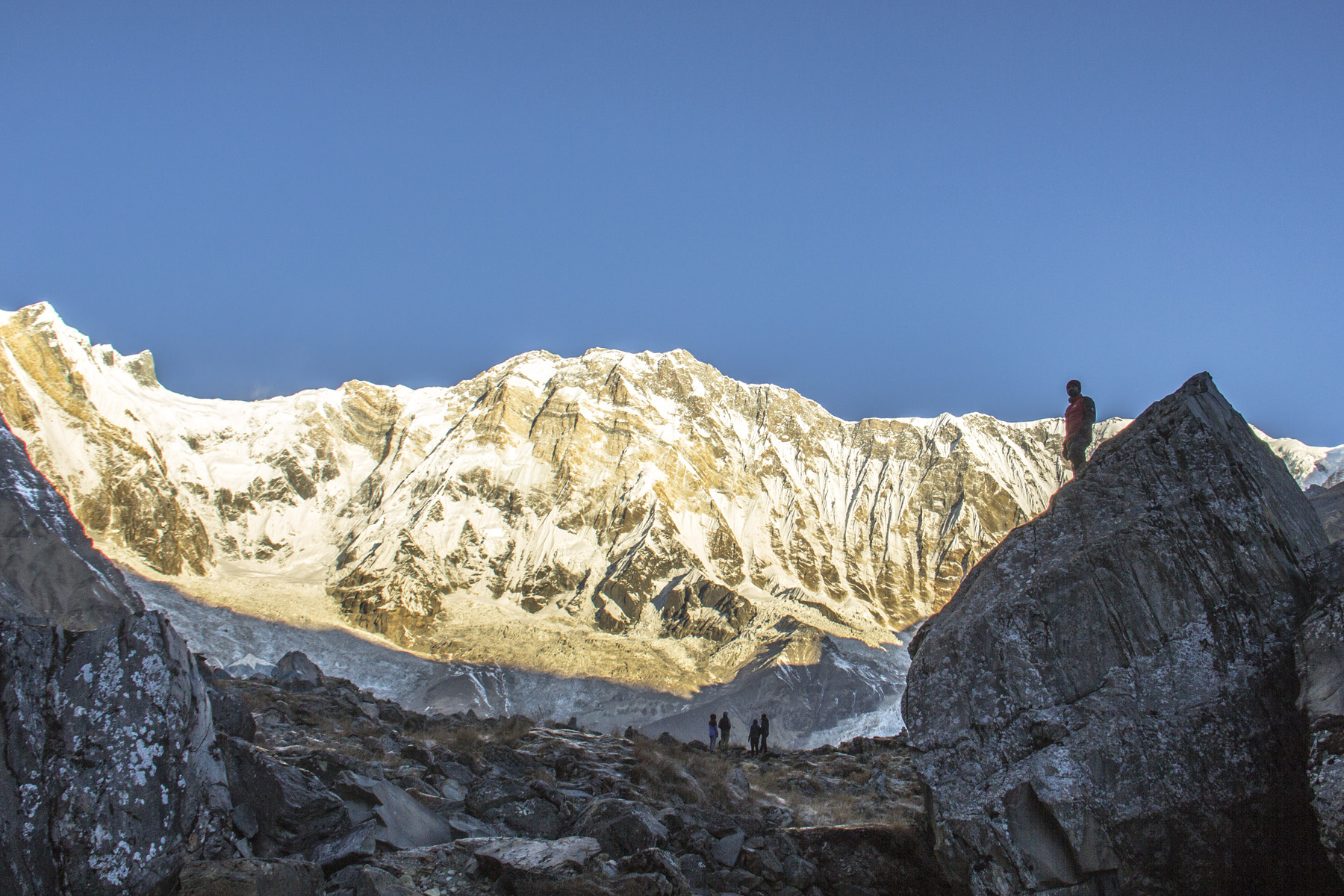
Annapurna (8,091 m) is the tenth highest mountain in the world, which was climbed first by a French Expedition team led by Herzog in 1950 via the north face. This mountain is also the first eight-thousanders to be conquered in human history and reached the summit on the very first try. On June 3, 1950, Maurice Herzog and Louis Lachenal of the team reached the top of Annapurna. Whereas, in 1970, the south face of the Annapurna was firstly climbed by the British Expedition team members – Don Whillans and Dougal Haston, without using supplementary oxygen.
There’s more to the history of these majestic massifs, and covering them all in one blog is not possible. Before the first successful attempts, there were many failed attempts, many climbers lost their lives, however, taught the fellow ones the tactics and the routes. The highest mountain climbing history is astonishing in itself. There are many things to learn from these legends. We hope the above information has helped you with a basic knowledge of Nepal’s highest mountain climbing history.


